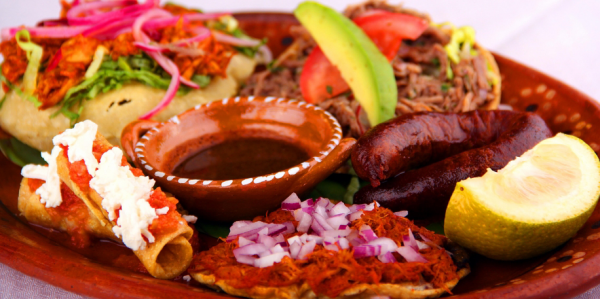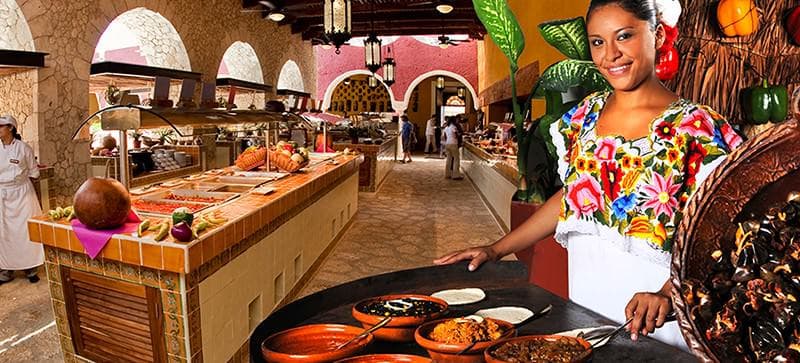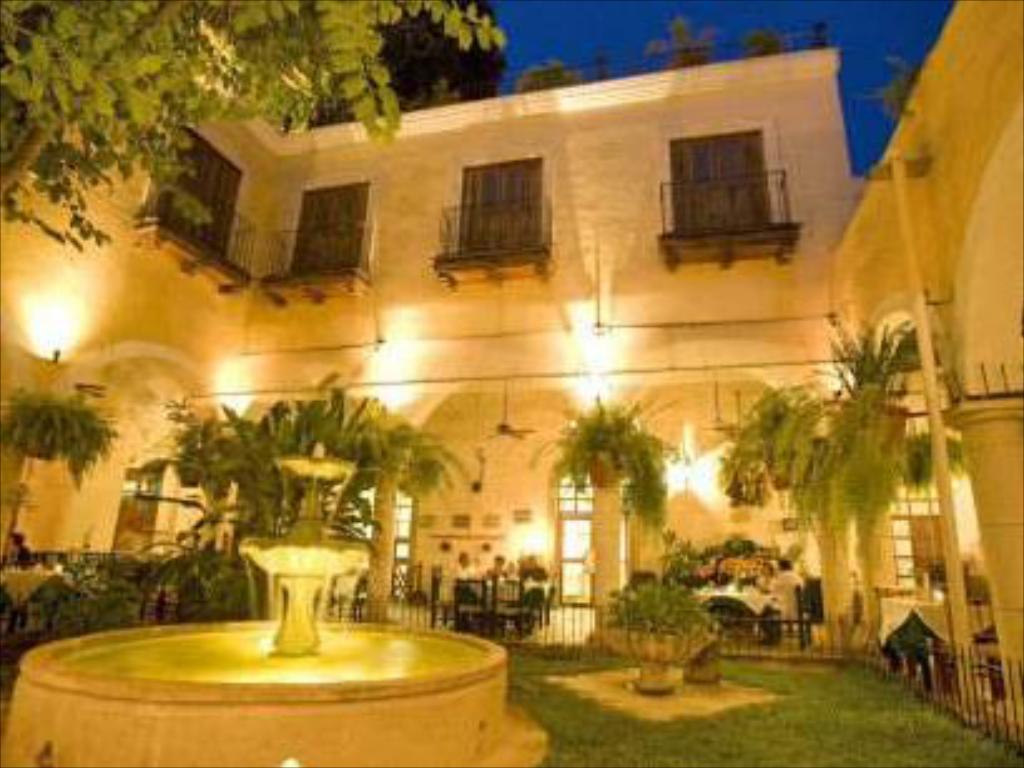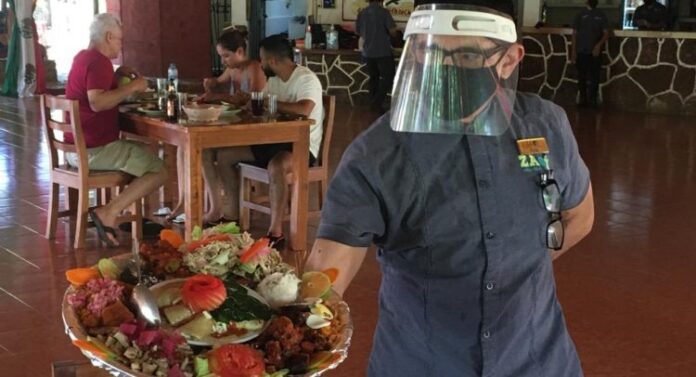The Yucatan Peninsula’s relative isolation from the rest of the country, coupled with a strong Mayan influence, have resulted in a distinctive Mexican regional cuisine, having ingredients and techniques found nowhere else in the country. Achiote (the seeds from the Annatto flower), Chaya (a shrub also known as tree spinach) and Habanero chiles are some of the regional ingredients, and together with Recados (local rubs or marinades that contain dried chiles, spices, herbs, and vinegar and are applied to meats and poultry) are the main pillars of this cuisine.
Pork is the main source of protein for Yucatecans, with cochinita pibil (pork cooked underground in a recado of sour oranges and achiote) being the region’s most famous dish. In Maya, pib means a hole in the ground, and cooking al pibil is a technique that has been in use for centuries in the region, to cook all kinds of meat underground, wrapped in banana leaves. Despite its plentiful coastline, fish and seafood sadly do not feature highly in the Mayan diet nor in regional restaurants.

Taberna de los Frailes
Undoubtedly the culinary highlight of our stay in Valladolid was dinner at Taberna de Los Frailes, overlooking the beautiful ex-convent of San Bernardino de Siena on Calle de los Frailes. The restaurant building blends Mayan and colonial styles and provides an atmospheric open-air garden setting for diners. It is also home to one of the town’s cenotes (limestone sinkholes), and a limited but well-thought-out wine list including some Mexican options.
We started with a couple of Margaritas, and Nachos Yucatan, crisp corn chips with pureed black beans, topped with crumbled grilled longaniza sausages and Cheddar cheese, and served with jalapenos and chile sauce. It was a huge plate of deliciously crunchy tacos and creamy flavorsome beans, chorizo-like sausages, and melted cheese – utterly divine comfort food.
This was followed by Pipian de Pollo – roasted chicken breast in a pipian sauce made from pumpkin seeds, tomato, and coriander, served with rice and black beans. The pipian sauce was nutty and delicious, but we felt that the chicken was a tad dry.
The Costilla ‘Kéek’em – pork ribs marinated in a Mayan red-spice recado baked in leaves of maculam and aguacatillo (two regional plants), was served with black beans and corn chips. The meat was tender and well flavored, a really delicious dish.
We ordered a bottle of Mexican Chenin Blanc – L. A. Cetto, 2011 from Valle de Guadalupe, which was straightforward, crisp and refreshing. The service at the restaurant was impeccable.

Hosteria del Marques
Lauded as the best restaurant in town, the Hosteria del Marques has fallen off its perch in the eyes of many lately. On our visit, however, we had a perfectly adequate Yucatecan lunch. The setting is lovely, by the main square, in the inner garden courtyard of the eponymous hotel.
We shared two main dishes of Zac Kol de Pollo (puree of corn with spices, tomato sauce, raisins, olives, capers, almonds, and chiles), and Plato tipico (grilled pork, quesadilla, taco, guacamole, and tortilla chips). Both were simple but well-made and flavorsome. To accompany, we had a dark beer called Leon.

Xtabentun: The Mayan Spirit
Xtabentun is the local Mayan beverage known as the liqueur of the gods, and two doors away from Dutzi Design on Calle 42, is the shop Sosa, where you can have a tasting of this aniseed and honey-flavored drink, and purchase a bottle if you wish.
Where to have a great cup of coffee? On the increasingly swish Calle de Los Frailes, Coqui Coqui Perfumes is the place where you can sip coffee with beautiful people. Opened by a former Argentinian model, Coqui Coqui is a perfumery, artisanal shop, and vintage coffee house, and has a single room for holiday rentals which is apparently almost always busy. Susanna, the manageress, was a delight to speak to, and the setting is exquisite.
Source: Yucatan Ahora






